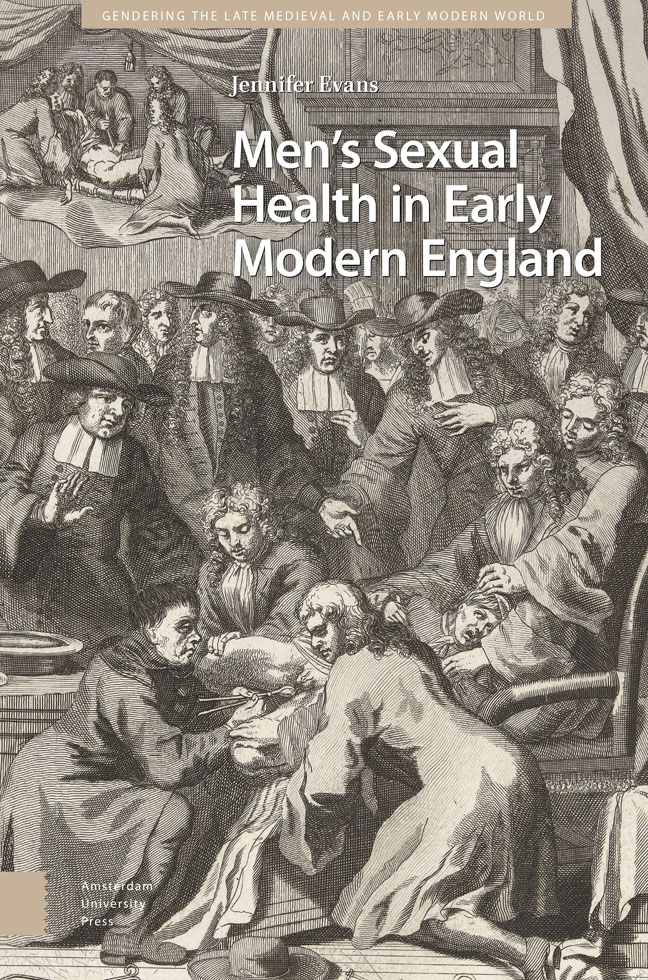5 - In ‘soe much payne he coud not indure it’
Published online by Cambridge University Press: 20 February 2024
Summary
Abstract: Chapter Five engages with the argument that genitourinary ailments were not important in the construction of men's sexual selfidentities. It counters this suggestion by illustrating that vernacular literature ubiquitously described genital complaints, and urinary difficulties, as some of the most painful men could experience. The pain these patients felt shaped emotional communities that bound patients to those around them. Moreover, in contradiction to scholarship that has suggested that physicians and surgeons thought little about their patients’ pain, this chapter illustrates that medical practitioners’ practices were increasingly shaped by their patients’ pain. This occurred in line with increased attention to the mechanisms of pain in medical texts from the 1660s.
Keywords: pain; emotional communities; analgesics; medical practice; pain relief
As we have seen, questions have been raised over the relative importance of genitourinary health to men's lives and identities. However, genitourinary conditions were important in shaping men's identities as patients because disorders affecting the testicles, and the genital region, were conceived of as some of the most painful ailments men could experience. This was one of the ways in which medical writers sometimes conceived of pain in terms of sex difference. Scholars have shown that men's responses to pain were not explicitly gendered; rather, pain was experienced and expressed through the flexibility of the humoral model. Pain could push men and women to act beyond expected gender norms, again suggesting a flexibility in how pain was experienced and expressed. Yet, men's narratives of illness were distinct from those provided by women, as they considered each illness in relation to their own previous bodily experiences. Moreover, some painful experiences were gender-/sex-limited. Childbirth was uniquely experienced by birthing women. Likewise, men's genitals were configured in medical literature as uniquely sensitive to pain. Men's genitourinary disorders represented an experience of pain particular to men. Pain created emotional communities that bound patients to those around them. Barbara H. Rosenwein explains that emotional communities were groups in which people shared norms of emotional expression and valued related emotions. In this context, pain related to the genital region allowed others to share in the experiences that genitourinary ill health created, by presenting family and friends with opportunities to acknowledge, intercede, and ameliorate the patient's pain. It thus bound patients and onlookers through shared emotional expression and concerns.
- Type
- Chapter
- Information
- Men's Sexual Health in Early Modern England , pp. 147 - 168Publisher: Amsterdam University PressPrint publication year: 2023



